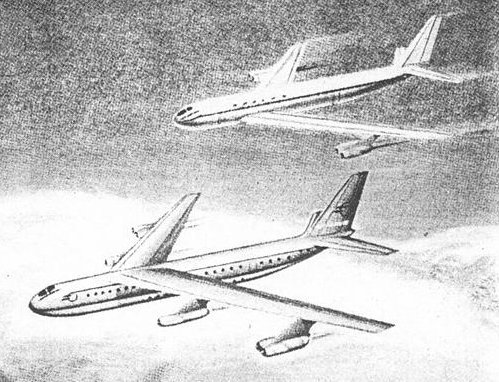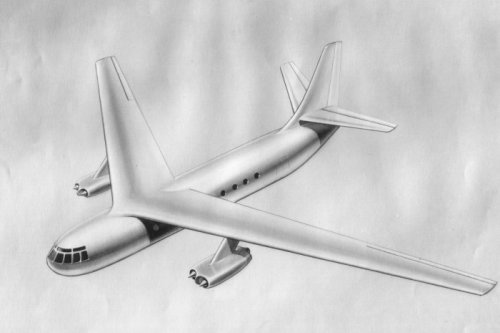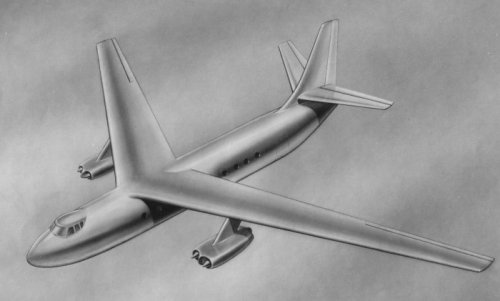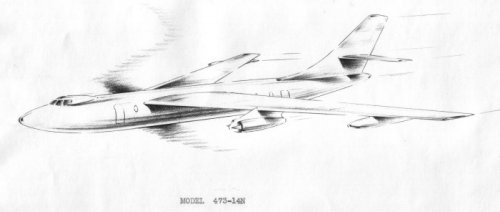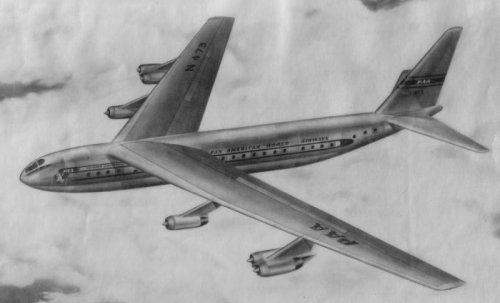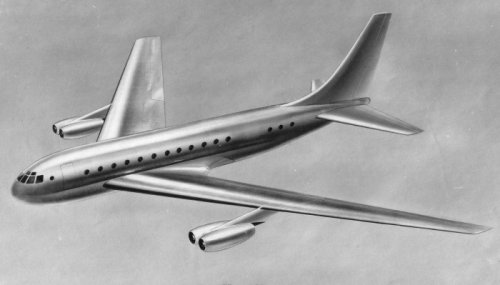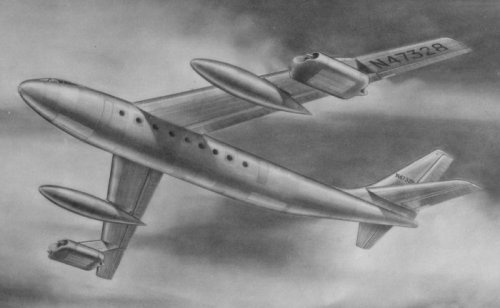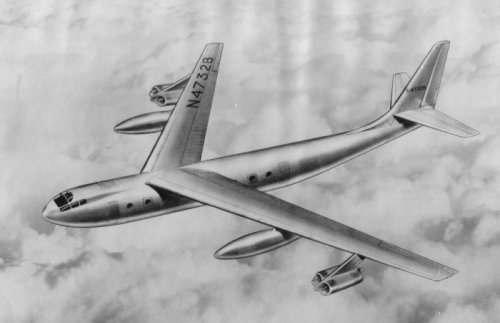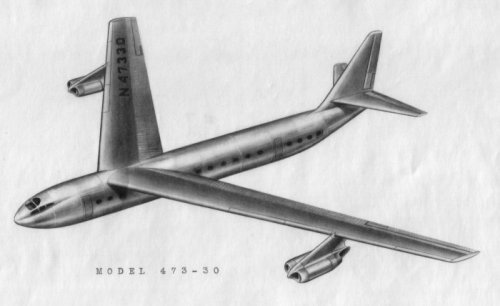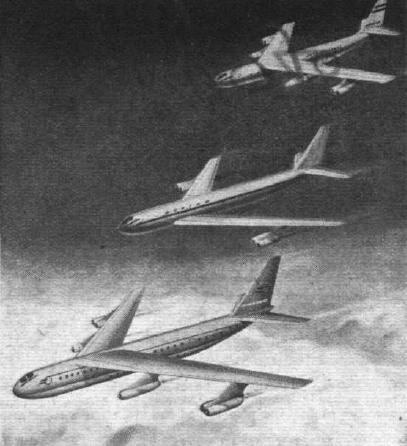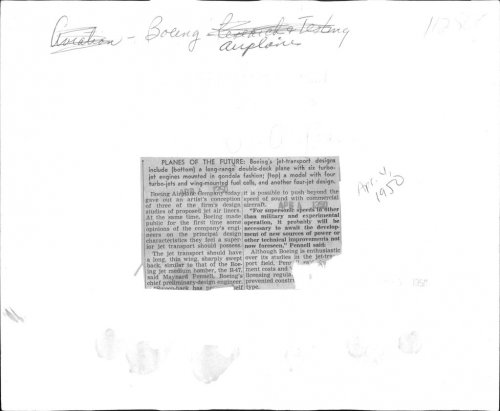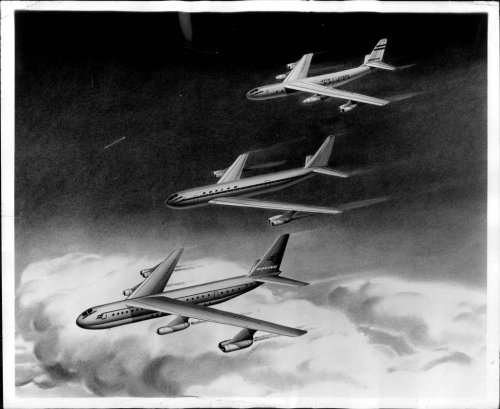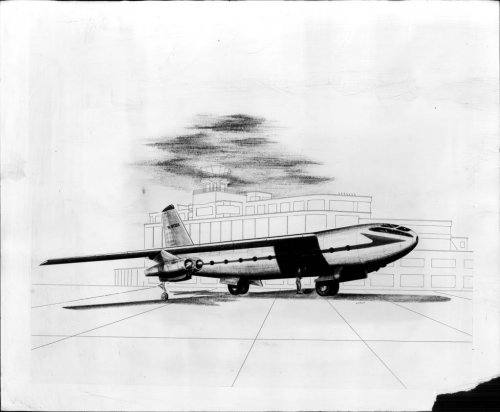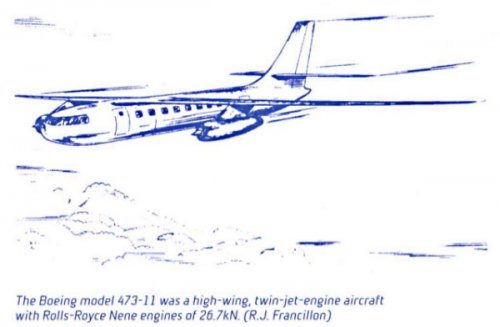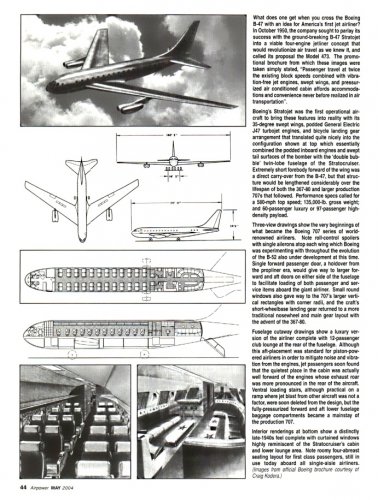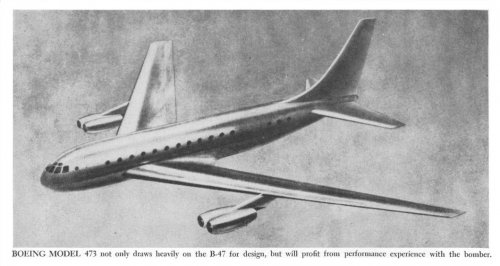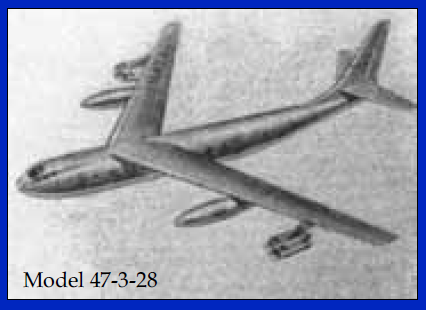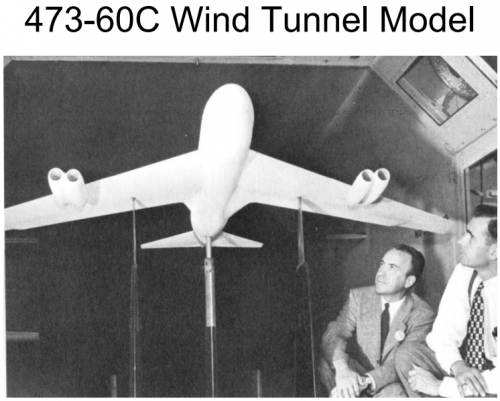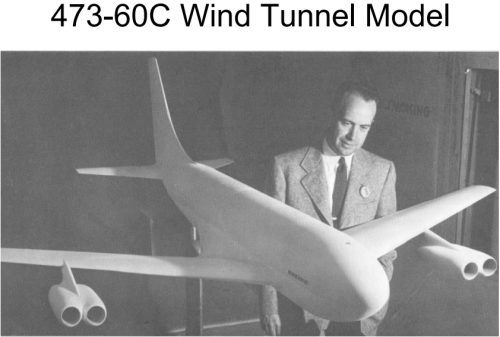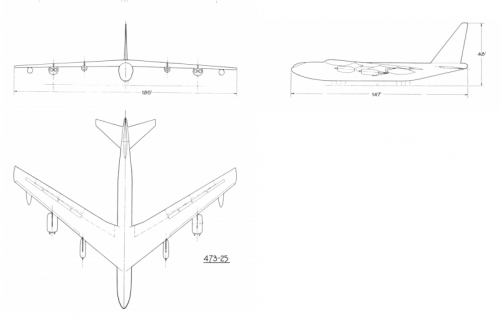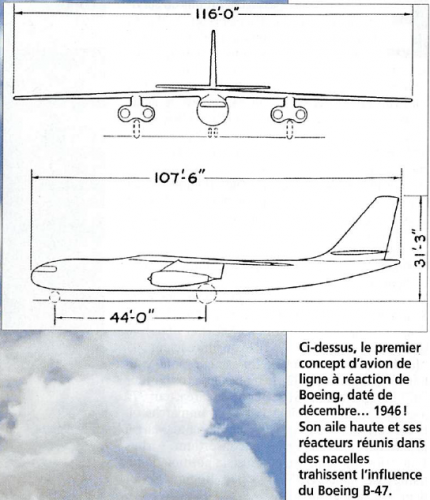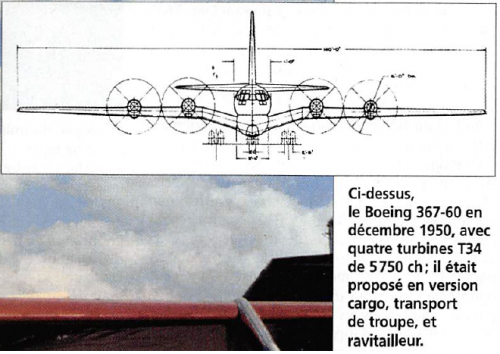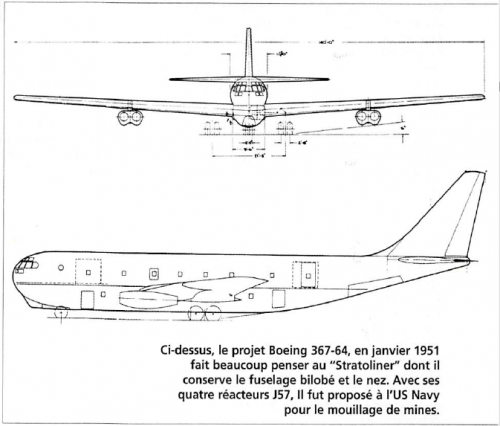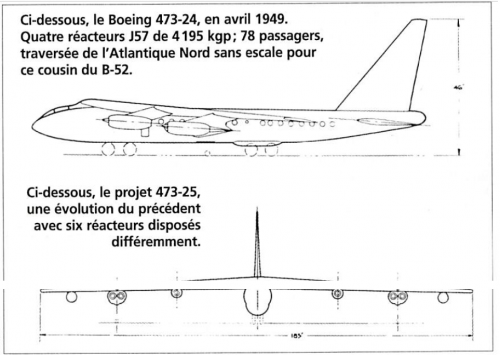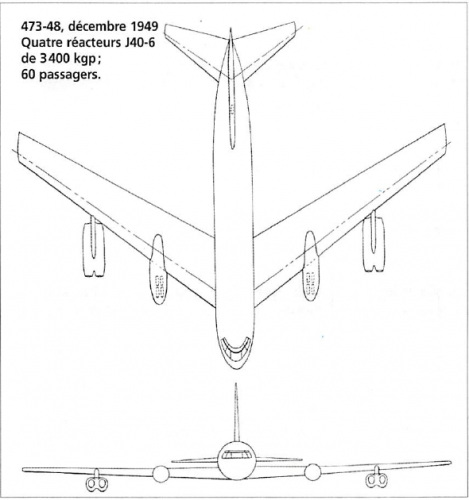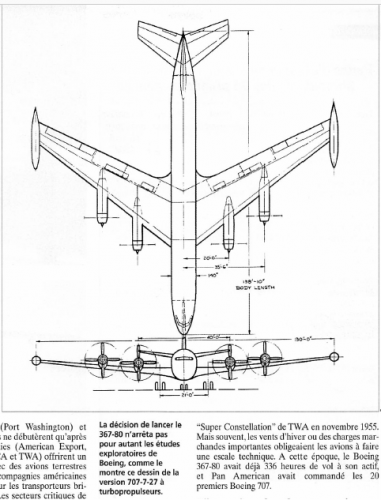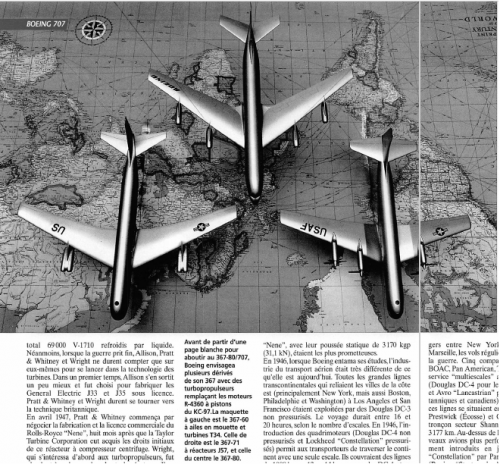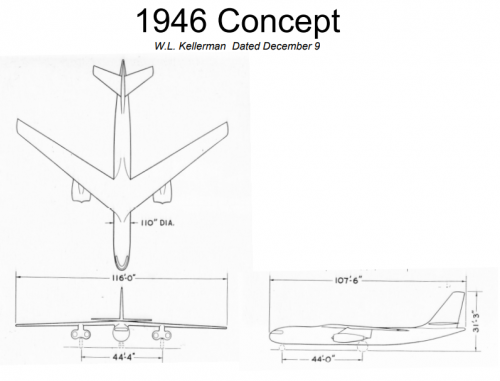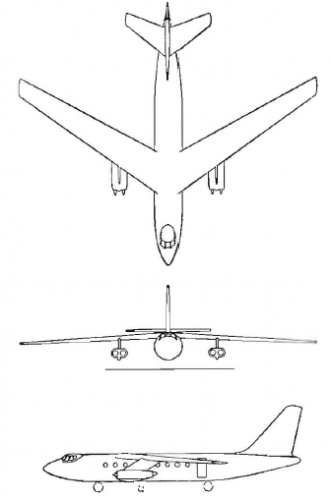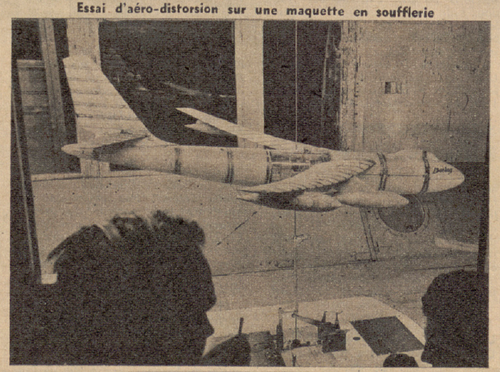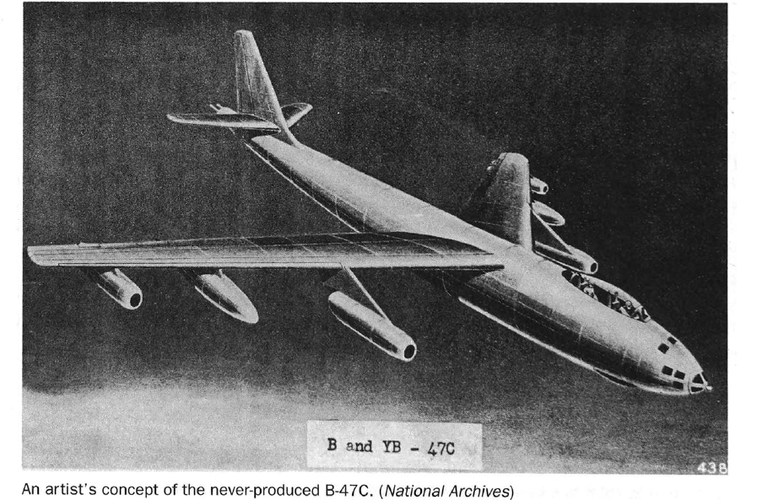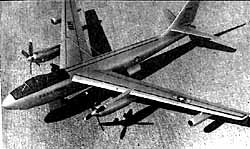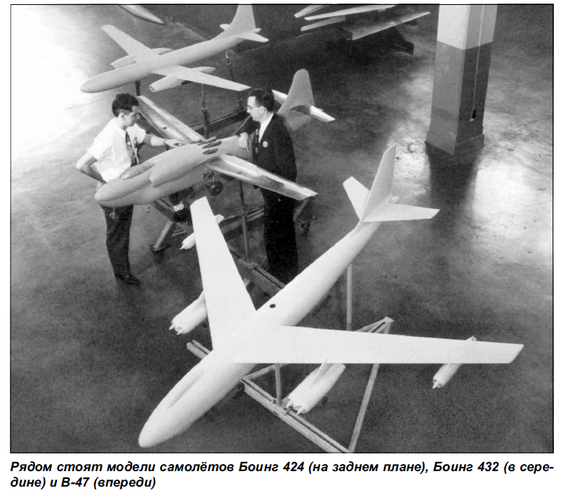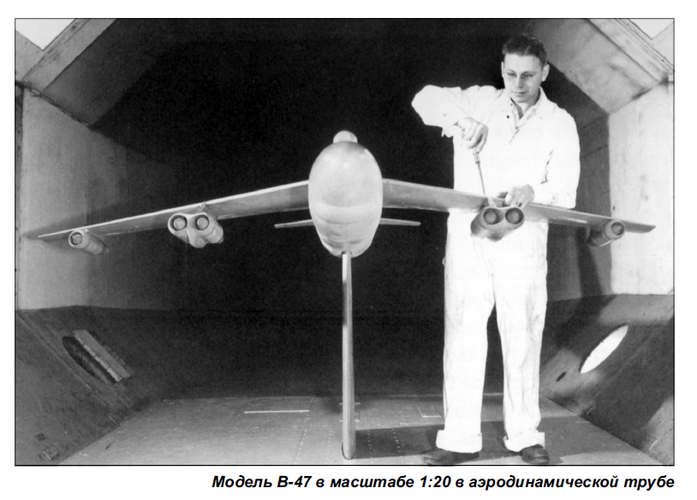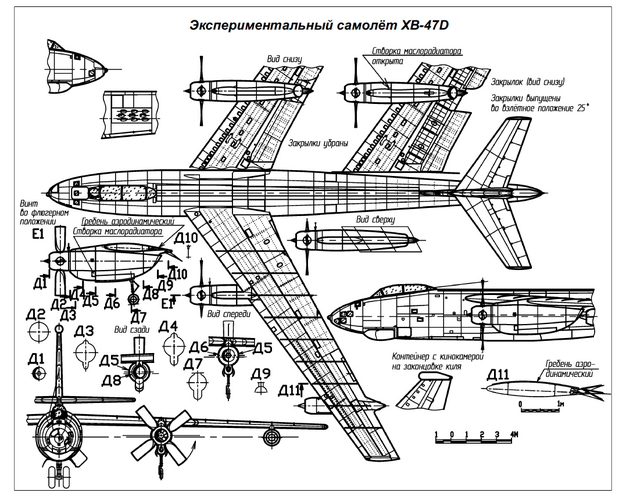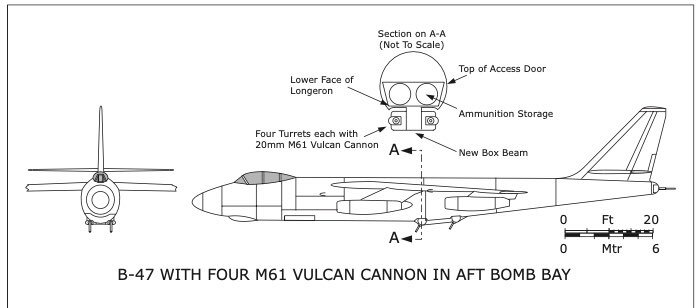One of Boeing's Designs for a Jet Transport Plane This drawing, the first made public by the company, shows many Stratojet features The jet transport of the future probably will resemble Boeing Airplane Company's radical B-47 Stratojet bomber, which early last year set a transcontinental speed record of 607 miles an hour. Boeing yesterday made public the first sketch of one of its jet transport designs, and it included many features similar to the B-47. The commercial version of the B-47 also would have a tandem. type landing gear and sharply swept-back wing and tail surfaces. It's fuselage, of course, would be bigger than that of the B-47 to accommodate passengers. Many airport officials throughout the nation have said introduction of jet planes may be delayed until air-port runways can be lengthened. One thing is certain: The Civil Aeronautics Administration will have to revise its air-traffic rules to handle the jets on the skyways and airport approaches. Boeing, through Well-wood E. Beall, vice president, already has urged the C. A. A. to plan for the advent of jet air-liners. Boeing's design is one of several different turbine-p ow er ed types on which design studies have been completed. Drawings of the other Boeing designs have not been made public yet. Boeing's big problem in the building of a jet transport proto-type is the financing. The firm suggested not long ago that the C. A. A. finance the jet-development and production program, leasing the speedy transports to commercial air lines. Traffic Increase - Traffic volume carried by Pan-American World Airways between Seattle and Alaska increased considerably during 1949, officials of the firm announced yesterday. The firm estimated its planes carried more than 3,000 more passengers to and from the territory and more than 977,149 pounds of cargo over 1948 figures. Mail volume was up nearly 100,- 000 pounds. Pan American hopes

